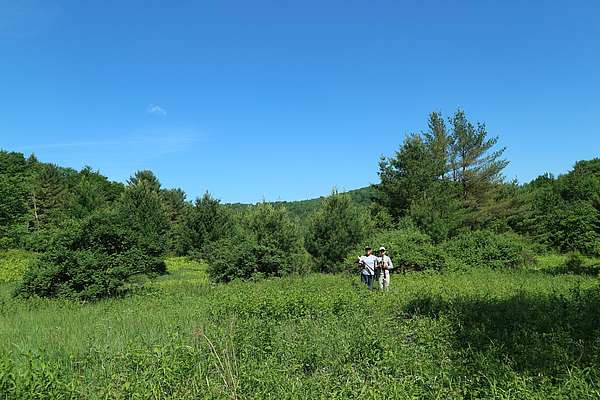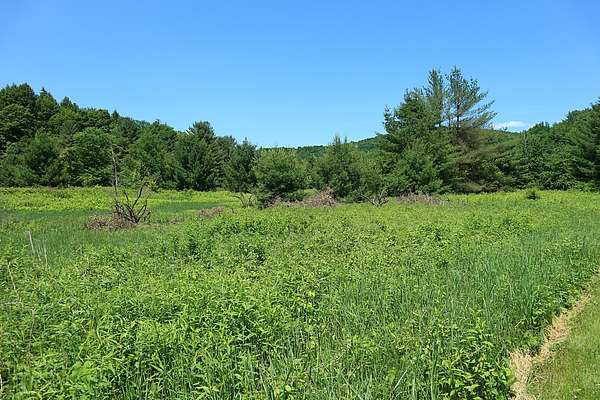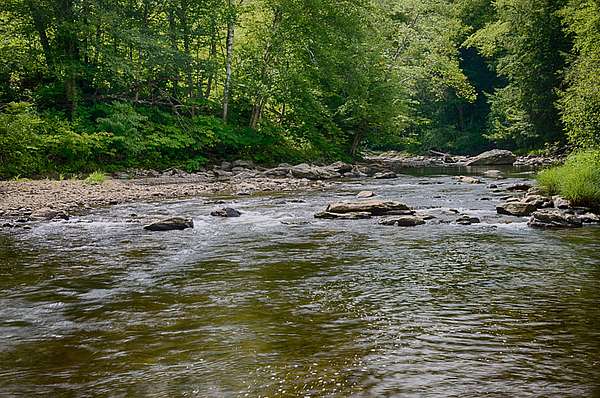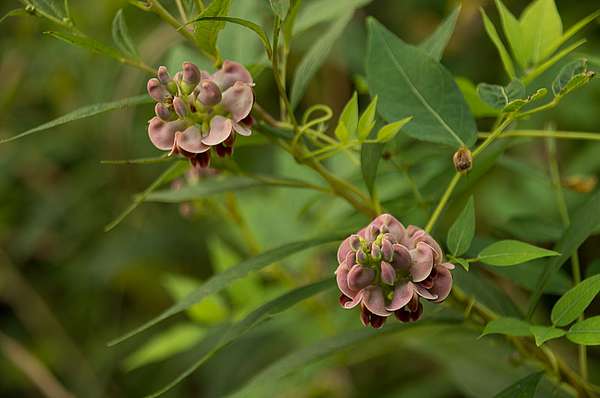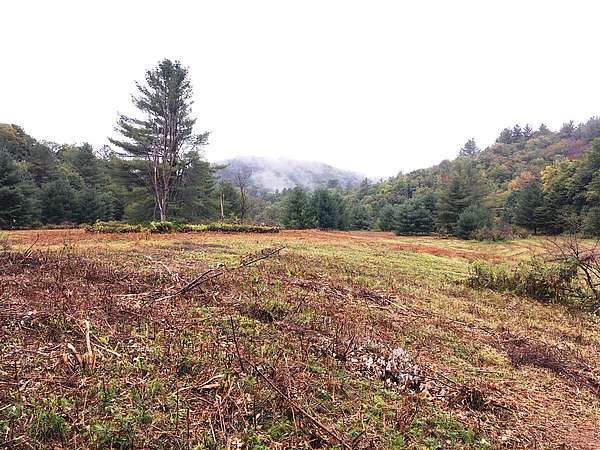If you take a walk along Alex's Trail at DuMont Meadow this fall, you'll see noticeably fewer bush honeysuckle plants than you would have last year. There's a good reason for that.
Throughout the growing season, volunteers cut back and pulled up over 500 of these non-native, invasive honeysuckle shrubs in and along the 7-acre meadow next to the Little River.
Large plants that were weakened - but not killed - by the cutting will put their energy into regrowing leaves and branches next year, rather than producing fruits, which will break seed production and help slow the honeysuckle's spread. Since Stowe Land Trust is committed to controlling the infestation without the use of herbicides, volunteers will be back next spring - and likely the following - to trim off new regrowth until the shrubs' resources are eventually depleted.
What will replace the honeysuckle? Part of our restoration effort is focused on returning the diversity of native floodplain species to the area along the river, creating a 100-foot riparian area.
To get ready for planting next spring, we'll pull up and cut back some more honeysuckle along the river this fall and partner with the Intervale Conservation Nursery to create a specific planting plan over the winter. Fortunately, a few native floodplain species are still growing on site - hold-overs from when the Little River's waters flooded what is now the meadow. American elm and butternut, along with shrub willow, speckled alder, and redosier dogwood are already present. So are some floodplain vines and perennials including riverbank grape and ground nut, as well as ostrich and sensitive ferns.In addition to planting more of some of these species, we'll mix back in additional trees and shrubs that make up the backbone of floodplain forests: silver maple, hackberry, swamp white oak, and cottonwood.
We'll also plant native fruiting shrubs including chokecherry, highbush cranberry, northern arrowwood, and elderberry to provide high-quality food and cover for wildlife - especially songbirds.
Visualizing what this riverbank will look like once these plants establish and take over takes a little imagination; in 10-20 years, visitors walking or biking on Alex's Trail will pass through the shade of dense forest edge, full of bird song and the buzz of insects. In late summer, grapes and elderberries will droop from branches, making for easy picking by wildlife - and people!
In addition to restoring the riparian area, we plan to keep the meadow open.
We will mow every few years, rather than every year, in order to favor plants like blackberry, spirea, aster, and goldenrod. These native flowering and fruiting species have greater habitat value for pollinators and other native wildlife than grass. This fall, we brushhogged the meadow; it hadn't been mowed in over a decade. Trees and woody shrubs - including honeysuckle - had already begun to reclaim what was once a hayfield. We left a patchwork of scattered trees including apple, hawthorn, and white pine that provide food, cover and perches for birds and others and act as stepping stones for animals traveling across an open area.
Stay tuned for more updates on this restoration effort and ways you can plan for and implement similar projects on your own land! Interested in volunteering to help out with this project or others on SLT-conserved land? Contact us!
